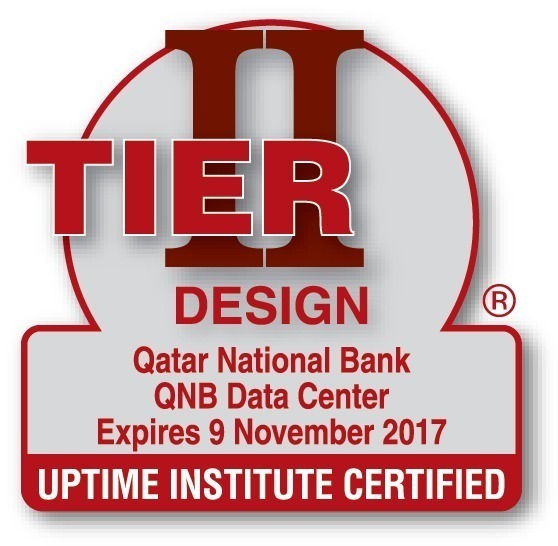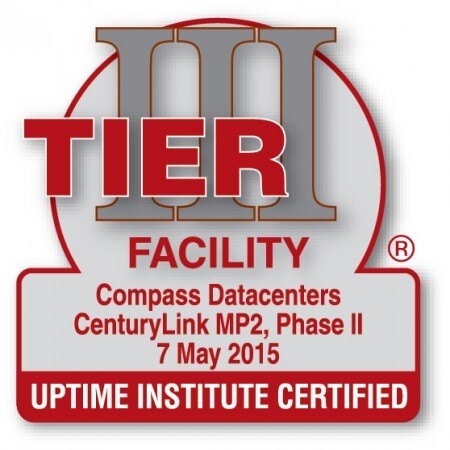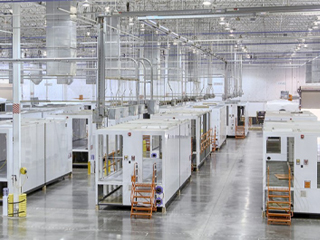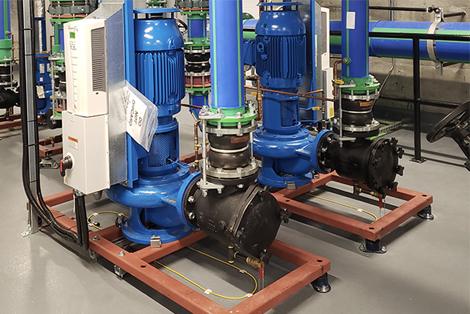Today’s business transactions and operations rely on computers and the internet. A data center hosts all applications, information, and virtual systems of a business. Thus, a data center is an essential component of today’s digital world.
Efficiency and reliability are among the crucial factors in data centers. Inadequate and poor performance of a data center will affect the business of the data center and all of the clients who rely on the data enters uptime for their operations. Downtime leads to customer dissatisfaction and lost revenue.
So how to identify the right facility for the company? There are many types of data centers that are categorized based on location. As well as sizes and performance capacity. There is another way to categorize data centers. That is the Tier Classification System.

Photo Credit: dade2.net
The Tier Classification System is created by the Global Data Center Authority, Uptime Institute. Tiers refer to the way of differentiating the requirements for the type of data center. It focuses on redundancy, load distribution, power, and cooling in data center types. Since 1987, the Uptime Institute has set the international standard for data center tiers.
In planning to build a data center, it’s important to understand the data center tiers. This will help you find the right type and tier level for your business needs. In this article, we break down the different tier levels. Learn the different requirements and capacities of each type.
Tier Level I
A Tier I data center has the following features:
Tier I has the lowest amount of uptime among the tier levels. On the other hand, it has the highest amount of downtime. It does not have any redundancy components on any part of the system. Tier I can be considered the smallest data center tier. It is also the simplest as it only has one distribution path.
This is ideal for small businesses and startup companies. If you are looking for a cost-effective data center, then this is for you. The Tier I data center does not have advanced features such as those in bigger facilities. It only has a single path for power. As well as a single uplink and non-redundant servers. Tier I is a budget data center.
According to the Uptime Institute, a Tier I data center must have the following requirements:
Furthermore, Tier I can survive a disruption from human error. But it cannot go through an unexpected failure or power outage. If the data center needs to have maintenance or repair, you need to shut down the entire facility. So as to prevent disruption or severe system failure.
Tier Level II

Photo credit: uptimeinstitute.com
A Tier II data center has the following features:
The Tier II data center has better uptime than the Tier I. It also has a lower amount of downtime. Unlike Tier I data centers, Tier II has a partial redundancy component. It has partial cooling and multiple power redundancy. Only the most critical systems, such as power and cooling, are offered with redundancy. Take note that Tier II data centers are still vulnerable to disruptions. No component is fault-tolerant.
This is ideal for small to midsize businesses and it guarantees an efficient IT system. For colocation data centers, a Tier II facility can accommodate more customers. If you would like to prioritize redundancy, this is also suitable for you. This is the right tier level for businesses that handle web traffic.
According to the Uptime Institute, a Tier II data center must have the following requirements:
The Tier II data centers do not have a complex infrastructure. But they offer a balance between performance capabilities and cost-effectiveness.
Tier Level III

Photo Credit: www.server-racks.com
A Tier III data center has the following features:
-
99.982 % uptime per year.
-
1.6 hours of downtime per year.
-
N+1 fault tolerance.
-
72 hours of protection against power outages.
Fault tolerance refers to the ability of a system to continue operating without interruption when one or more of its components fail. Tier I and II data centers do not have this feature as they are smaller and simpler. But high tier levels have fault tolerance that allows them to operate even during short, unexpected disruptions.
The Tier III data center can go through maintenance without disturbance. But take note that IT equipment is still vulnerable to damage. Especially when there are unplanned maintenance and emergency. Another great feature of a Tier III data center is the protection from power outages. This facility has at least three days of exclusive power. Without needing an external power source.
This is ideal for bigger companies that are larger than an average small to midsize business. Tier III is intended for relatively larger scale companies. It has basic requirements similar to a Tier II data center. But with more advanced features and better components. It is closer to the features of a Tier IV infrastructure but with less elite protections.
Tier III also costs less than Tier IV. You may want to have this instead if your company does not need to compete on an international level against elite brands.
Tier Level IV
A Tier IV data center has the following features:
-
99.995 % Uptime per Year
-
26.3 Minutes of Downtime per Year
-
2N+1 Fault Tolerance
-
96 Hours of Protection Against Power Outages
-
Zero Single Points of Failure
Currently, Tier IV is the highest level a data center can achieve. It has redundancy for each system. As well as data and processes protection streams. A single error or power outage will not affect the entire facility. It has the highest percentage of uptime which translates as lowest amount of downtime. The 2N+1 infrastructure allows for its full redundancy components. The Tier IV data center can last for at least four days running on its own backup power.
This is ideal for enterprise-level and hyper-scale services. Businesses that compete on international levels typically have a Tier IV data center. This is because of the high web traffic. Tier IV is a large facility with twice the infrastructure of a Tier III data center.
The Tier IV data center ensures the safety of a business regardless of disruptions. Cooling, power, data storage, and uplinks all have backup systems. It has the most elite security system to secure your data.
This tier also has the most advantageous locations for the most critical components which help in prolonging the life of IT equipment. But take note that the Tier IV data center is the most expensive facility as it is intended for hyper-scale operations. Hence, it is typically operated by international brands with high web traffic.
AKCP for Comprehensive Monitoring
Whether you are looking for a few temperature and humidity sensors for your computer room or rolling out a multi cabinet monitoring solution, AKCP has an end-to-end data center monitoring solution including sensors and AKCPro Server DCIM software. Our Rack+ solution is an integrated intelligent rack or aisle containment system. Pressure differential sensors check proper air pressure gradients between hot and cold aisles. RFID Cabinet locks secure your IT infrastructure.
AKCP provides both traditional wired and wireless data center monitoring solutions. Our Wireless Tunnel System builds upon LoRa technology, with specific features designed to meet the needs of data center monitoring. Wireless sensors give rapid deployment, easy installation, and a high level of security. It is the only LoRa based radio solution that has been designed specifically for critical infrastructure monitoring, with instant notifications and on sensor threshold level checking.
AKCPro Server Monitoring Platform
AKCPro Server is a world-class centralized monitoring and management software. Including drill down mapping, drawing program for creating floor plans, graphing, custom dashboards, tablet user interface, synchronization of sensor events with video feeds.
Data Center Infrastructure Management with LoRa™
Deploying a DCIM in your data center is easy.
The AKCP L-DCIM is a DCIM in a box solution with an embedded AKCPro Server. Monitor all your network-enabled devices such as intelligent PDU’s, UPS’s, rectifiers, and CRAC units. Supports SNMP, Ping, and Modbus TCP/IP virtual sensors. Add sensors connected to AKCP base units for a complete end-to-end data center monitoring solution.
Tablet View
The L-DCIM has a dedicated tablet view user interface, allowing you to monitor your data center stats with drill-down mapping from custom desktops over WiFi while roaming your data center. This allows technicians on the ground to be updated in real-time and respond to critical alerts immediately.
Floor Plan to Cabinet Mapping
AKCPro Server has a simple drawing program to allow you to quickly create floor plan views of your data center, drag and drop sensors into their relevant locations and drill down from a building-wide to an individual cabinet. The mapping user interface can be accessed from a desktop PC or on the roaming tablet view.
Video, Security and Access Control
Connect IP video cameras and record sensor events. Synchronize this recorded video with events in a real-time playback window. Secure your data center with AKCP access control RFID swing handle cabinet locks and monitor and administer your data center access control from a single user interface.
Conclusion
Although not required, a Tier Classification is highly recommended for data center operators. It helps in legitimizing data center services. It also increases the credibility and reliability of your business.
Nowadays, there are new tier-level rankings claimed by data center enterprises. But there are only four certified tier level rankings issued by the Uptime Institute. When choosing the tier level for your facility, be sure to consult the legitimate system. The Uptime Institute is the only widely recognized international standard for tier rankings.
Getting a certificate from the Uptime Institute can be challenging. High investment does not guarantee a specific ranking. So be sure to consult experts if you are planning to build a data center. Find the right location, data center type, and tier level fit for all your business needs.
Reference Links:
https://phoenixnap.com/blog/data-center-tiers-classification
https://www.stratacore.com/the-advisor/4-tiers-data-center-classification
https://uptimeinstitute.com/tiers










